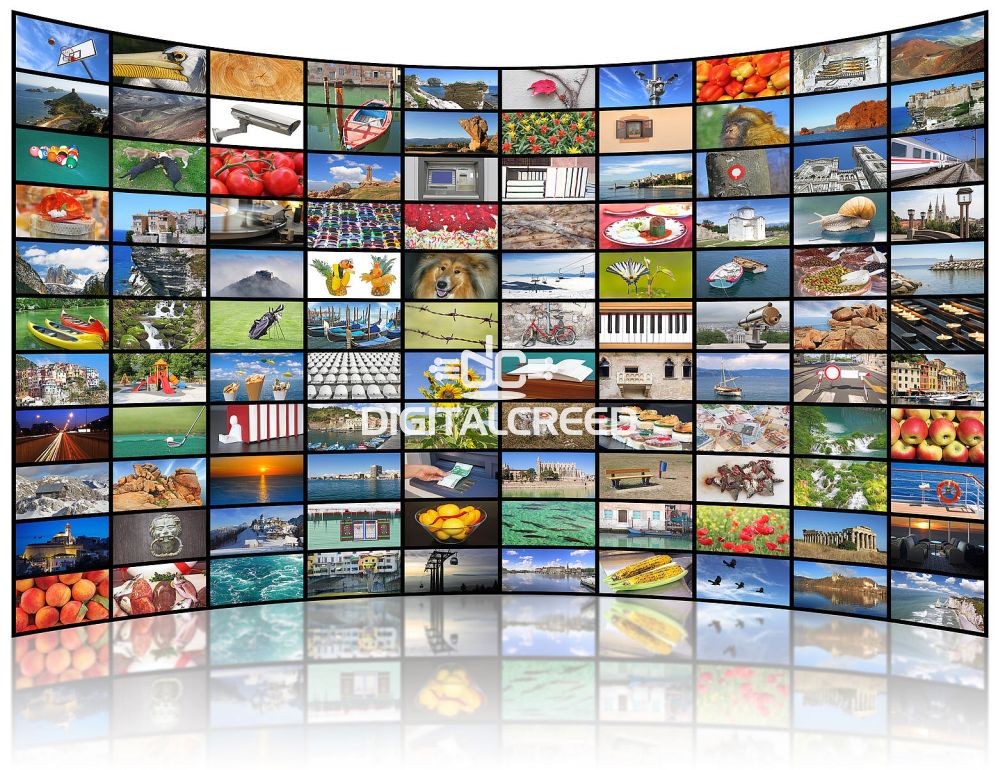The power to build culture on the back of media is shifting from the hands of traditional media companies to the hands of consumers, thanks to Internet channels and new video production tools
Digital entertainment is rapidly moving towards a hyper-connected, Internet-based digital distribution model with content delivered on-demand for consumers on a screen of their choice. YouTube and Facebook are emerging as the new cable operators for video distribution. Content that did not have an outlet in a limited shelf space, linear TV world now has distribution everywhere on YouTube and other digital mediums, where there is no limit on channel or shelf space. New, original content (like House of Cards) was first released on YouTube, Netflix, and Amazon — and popularized on Facebook and other social networks.
Video content consumption in India
India is in the early phase of integrating into this new global media eco system; this trend is accelerating with smartphone broadband Internet access. Although traditional TV is still growing in India, young audiences have already shifted to online as the first destination for video. Increasingly, mainstream media is also shifting towards digital video (Star TV/Hotstar and Eros International/Erosnow). And there are multiple OTT players (like Wynk, Hook, Voot etc) surfacing in the market. The video ad spend, which is now disproportionate on traditional TV, is bound to follow consumer eyeballs soon. India has the numbers in terms of viewers — even with less than 20% Internet broadband penetration, India is already the third largest consumer of YouTube content and the second largest consumer of Facebook content in the world. Hence, the growth potential for the entire digital video eco-system in India is truly massive.
According to Venkat Prasad, COO/CTO and Co-founder at Culture Machine, one of the fastest growing digital video networks in Asia, “With digital video, the power to build culture on the back of media is shifting from the hands of traditional media companies to the hands of consumers today. We at Culture Machine create plenty of short-form video content that is conducive to a low-bandwidth environment mobile first Internet market like India. We also do engaging storytelling using text, image and video on our properties like BeingIndian.com which lets consumers who are bandwidth constrained consume the story around our videos. As bandwidth improves we are likely to see tremendous uptake and growth in our audience base.”
Related story: Viacom18 moves into the world of connected screens with the launch of its digital VOD platform
Link: https://www.digitalcreed.in/?p=3220
Role of technology
Technology plays a key role in determining the relevant content for the right audience. Technology not only enables global distribution, but also in curation and personalization of content tailored to audience interest and engagement.
In this new era of unlimited distribution outlets and personalized content consumption, the keys to success is to know what “content to create” for the target consumers and to “create it at scale”. For instance, the Video Machine product of Culture Machine helps to solve some of the “create at scale” problems. It allows one to take up any audio track and convert that into great looking video in a few seconds. What takes a human two days and significant cost to create, the system can create in a matter of seconds, and at a fraction of cost. If you look at music as an industry, you’ll see that for every music track that has a video there are 10 tracks that do not have a video. Similarly, there are emerging content formats out there — whether it is a listicles, how-tos, recipes, curated news etc, which never had an outlet in traditional media, but is increasingly popular in the digital world. The company’s Video Machine product helps to create these hygiene type content for digital channels at scale.
Data analytics for personalised content
In addition, the key to engage audiences successfully on digital platforms, is to show them relevant content that is personalized. Thus, data analytics solutions also play an important role. Platforms like YouTube and Facebook use algorithmic curation and machine learning to show relevant and personalized content to audiences. At Culture Machine for instance, analytics and content creation are based on data that is a core part of their DNA.
Prasad asserted, “We use analytics to understand the right content to create for our target audience. We have a big data stack called Intelligence Machine that collects audience consumption and engagement data for billions of videos across digital platforms and synthesizes the right recipe – it provides a “creative brief” for the programming team to create content for our owned channels as well as our publisher, talents and brand partners.”
The company has seen a phenomenal increase in its content success rate as a result of this strategy. For example, its “Epified” channels on YouTube and Facebook have seen a 4x increase in views and 10x increase in video engagement since it started using recommendations from Intelligence Machine.
The future is bright for digital video. And the lines between entertainment, infotainment and edutainment are blurring. Whether it is Put Chutney in the south or Being Indian, there is a new generation of storytelling that is happening online first. This trend will accelerate in the near future in India, given the young demographic base and access to increasingly cheap Internet connections via smartphones. Today, mobile is the new personalized TV and social is the new distribution.
Thus, primetime is now anytime.

